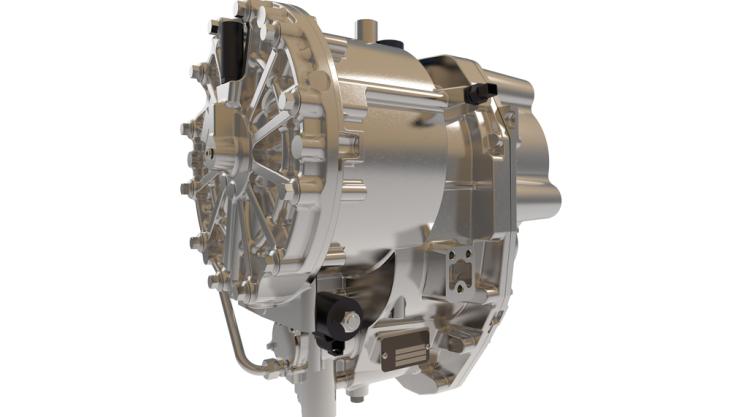Flybrid ERS from Torotrak Group

Leading off-highway OEMs working with energy-recovery technology to achieve significant fuel savings
LOW-carbon vehicle technology innovators Torotrak Group are working with some of the leading original equipment manufacturers to achieve significant fuel savings on future generations of off-highway vehicles.
Torotrak’s Flybrid flywheel energy-recovery system (ERS) features in two programmes currently under way – one with JCB and another recently announced with Turner Powertrain Systems Ltd, a wholly owned subsidiary of Caterpillar Inc. Though quite separate, both programmes are part government-funded by Innovate UK through the Advanced Propulsion Centre.
According to Torotrak Group, fuel savings of 15–30% could be achieved by off-highway machinery operators who specify Flybrid ERS, significantly reducing their operating costs.
The system achieves the improvement by capturing and reusing energy that is normally wasted during repetitive cycles and operations, such as raising and lowering the boom of an excavator or the mast on a fork-lift truck; slewing on an excavator; or shuttling between forward and reverse with a loader.
By pre-charging the flywheel, Flybrid ERS can also provide load-levelling, meeting surges in power demand by providing a boost in peak power of between 10kW and 1,000kW, depending on the application.
This means that smaller engines and those de-rated to below 56kW, to meet emissions legislation, can match the performance of more powerful units without incurring the fuel-consumption penalty resulting from a bigger engine.
‘A mechanical flywheel is a compact, well-proven and highly efficient way to capture and release large amounts of energy very quickly,’ commented Steve Hughes, chief operating officer of Torotrak Group. ‘The low cost of Flybrid ERS provides fuel savings that pay for the technology within the first year of operation.’
Torotrak Group’s Flybrid ERS is self-contained and designed for minimal maintenance. It can be connected to the vehicle via the hydraulic system, engine, transmission or driveline, and can be easily designed into many machine types without disrupting the basic vehicle architecture.
‘Flybrid ERS is very compact; we can transfer up to 1,400kJ at up to 900kW using just a space-efficient 10kg flywheel,’ said Mr Hughes. ‘The typical installation envelope is significantly smaller than a DPF exhaust after-treatment system.’
Flybrid ERS is market-ready using a hydraulic interface through a pump/motor and valve block, while alternatives that interface via the engine or transmission are at an advanced stage of development.

